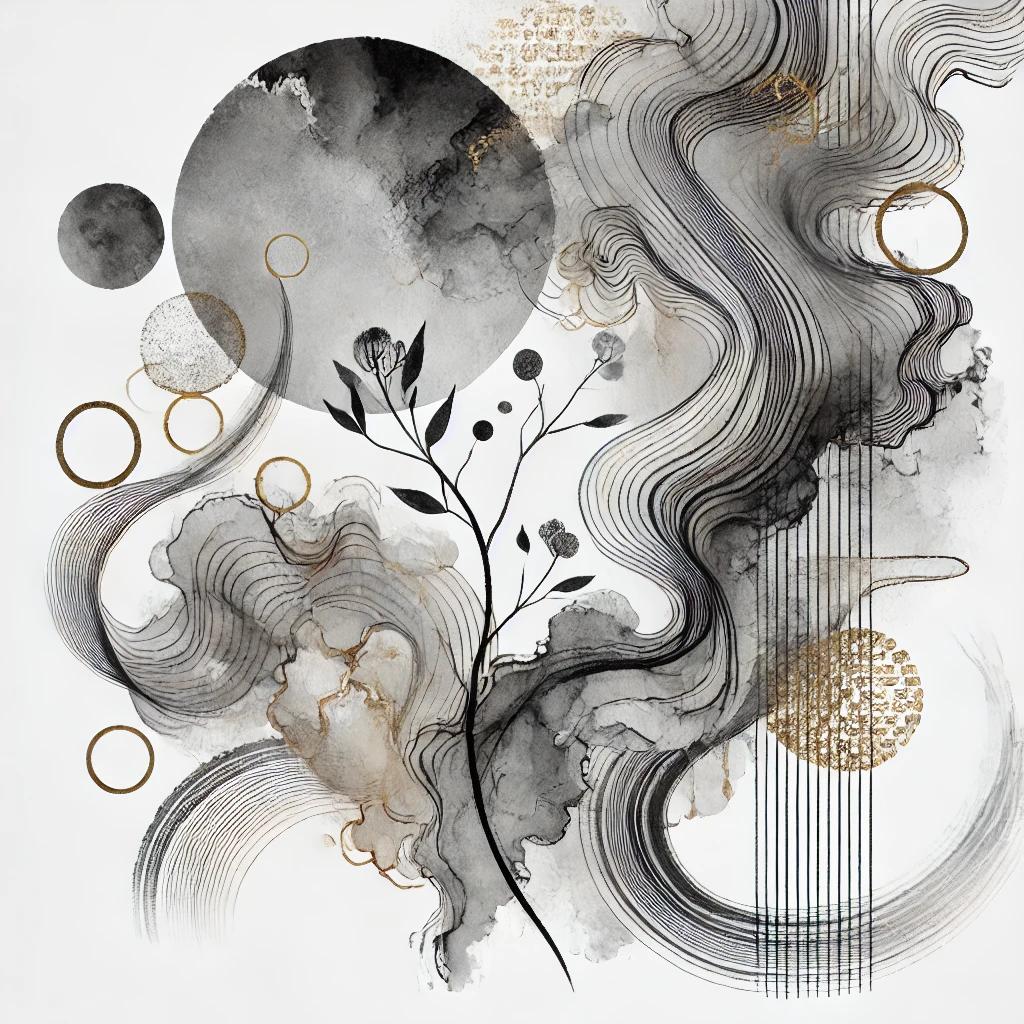Most of the techniques used in contemporary ink art are ancient, or at least based on modernized traditional approaches. In this respect, there could be no better example than Sumi-e. It is truly remarkable how traditional Japanese ink painting has adapted to contemporary aesthetic standards.
Sumi-e is a traditional Japanese ink painting art that developed during the Heian period (794–1185). This art form was heavily influenced by Chinese calligraphy and painting but evolved with a uniquely Japanese character. Sumi-e artists use black ink on paper or silk to create simple yet expressive images that often depict nature, such as mountains, rivers, trees, and animals. The relationship between Sumi-e and Japanese Zen philosophy is deep and meaningful. Zen philosophy emphasizes simplicity, concentration, and inner peace. The Sumi-e artist seeks to capture the essence of the subject with minimal but decisive brushstrokes, reflecting the Zen principle of “wabi-sabi,” which values the beauty of imperfection and transience. Sumi-e is not merely a technique but a form of spiritual practice, in which the artist aims to express the true nature of the object and attain a state of enlightenment and serenity. Through this art, artists cultivate their inner balance and harmony with the world around them.
Contemporary artists combine traditional methods with modern influences, creating works that retain the classical aesthetics of Sumi-e while also incorporating abstract and experimental elements. For example, artists often experiment with new forms of ink, paper, and brushes, while some even incorporate colors or digital media into their work.
Furthermore, the themes of contemporary Sumi-e artworks often reflect today’s concerns and trends. Artists explore topics such as environmental crisis, identity, and globalization, bringing Zen philosophy into dialogue with modern challenges. This approach allows Sumi-e to remain alive and relevant while preserving its traditional charm and spiritual depth. In summary, the evolution of Sumi-e in contemporary art reveals a rich and dynamic continuity, where tradition and innovation coexist harmoniously. Modern artists, inspired by the history and philosophy of Sumi-e, continue to explore new modes of expression, keeping an age-old art form vibrantly alive.






